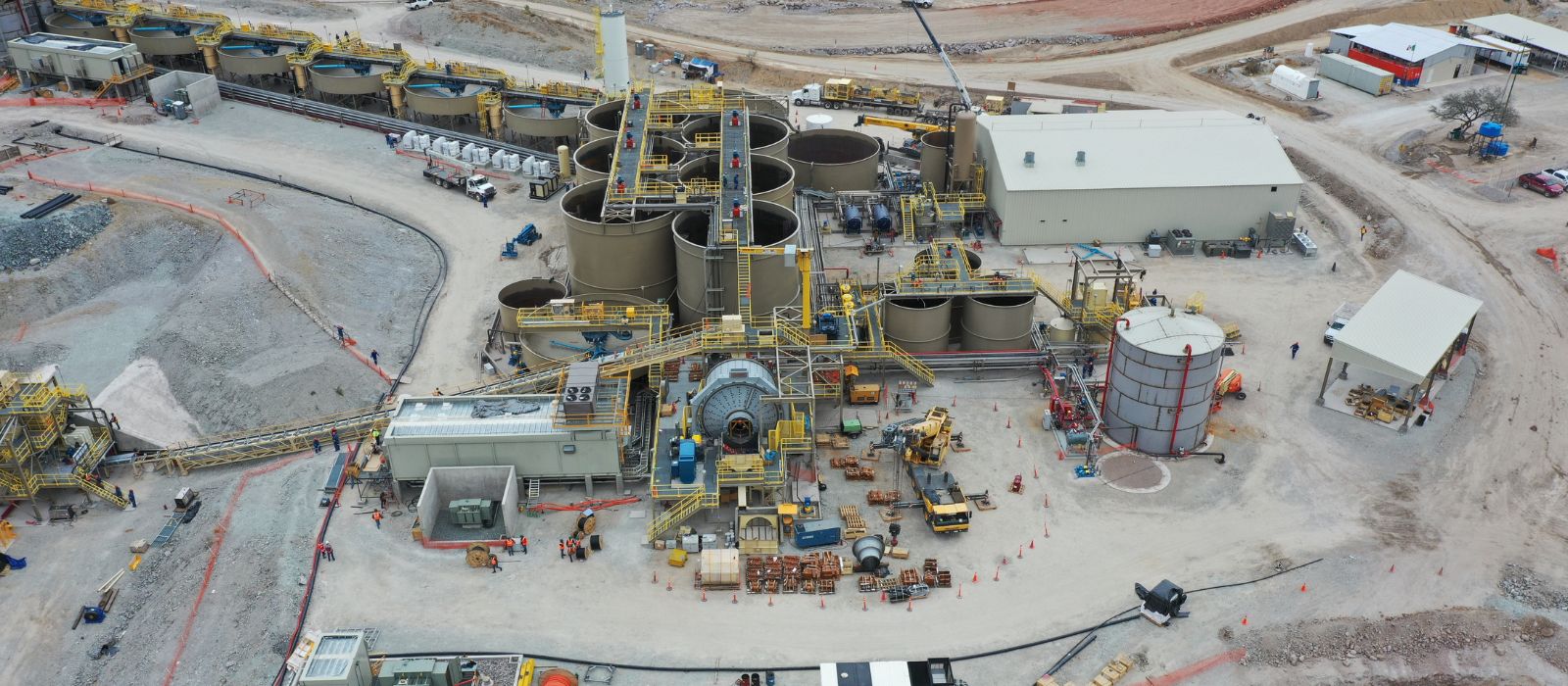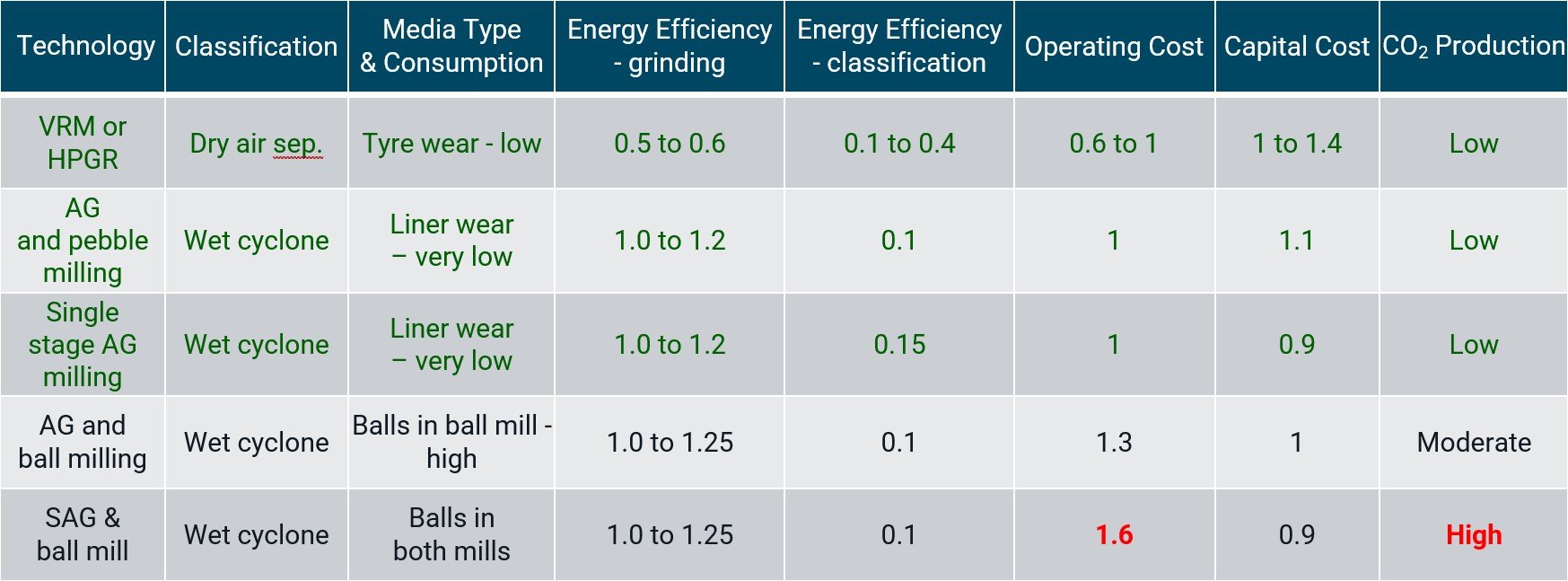Beyond SAG milling – The future of grinding

For many projects, the comminution circuit is the primary energy consumer in a processing plant. The selection and operation of comminution circuits have significant impacts on the environmental and sustainability aspects of a project.
These circuits are typically responsible for a large portion of the energy consumption, water usage, and emissions of greenhouse gases (GHG) in a mining enterprise. The pursuit of sustainable mineral processing, a critical endeavour, aims to develop and adopt technologies and innovative processes with smaller carbon footprints and conserve resources.
In conjunction with economic evaluations, there are innovative ways to improve direct and indirect energy savings and minimise the overall environmental impact. The focus for direct energy reduction is technology-driven with more efficient breakage mechanisms. Of equal importance is the indirect energy (and cost) associated with grinding media and liner consumption. The production of media and wear liners requires mining, smelting, forging, and transport to site, with each stage contributing to GHG emissions.
Since their early application, semi-autogenous grinding (SAG) mills have provided the modern mining industry with workhorses used for most high-throughput comminution applications. These mills can functionally replace most of the crushing equipment in a comminution circuit, resulting in a tight footprint and reducing common issues experienced in fine crushing plants. Staged crushing and high-pressure grinding rolls (HPGR) circuits followed by ball mills are typically the most favourable financially when ores are competent and power cost is high, as they are more energy-efficient than SAG mill-based flowsheet options.
When comparing comminution circuit flowsheets, accounting for direct and indirect emissions in construction and operation can dramatically change the relative economic benefit. The selection of autogenous comminution technologies that reduce energy requirements and the use of grinding media can improve project economics and, at the same time, reduce GHG emissions.
Comminution circuits, despite their importance, face operational challenges due to variable ore compositions including shifts in ore hardness, feed sizes, and densities. Effective process control is crucial for maintaining stability and efficiency in these circuits. A subpar control system could lead to up to 20 per cent efficiency losses by failing to meet throughput or grind targets. Enhanced stability can be achieved through advanced process control (APC) or model predictive control (MPC). Further boost in circuit performance can be achieved by integrating advanced sensors for real-time ore characterisation and wear rate monitoring, as well as AI systems to dynamically adjust control parameters based on efficiency metrics like cost per ton and GHG emissions.
There are alternative comminution flowsheets and technology solutions to conventional SAG-based circuits that can significantly reduce the overall GHG emission footprint when considering direct and indirect emissions. These include:
- Autogenous milling (primary and secondary milling) [eg Aitik and Forrestania]; single stage autogenous milling [eg Olympic Dam and Kambalda]; and autogenous primary mills and secondary ball milling [eg Savage River and Ridgeway] require similar energy inputs as traditional SAG-based circuits, but use rocks as grinding media, reducing the indirect GHG emissions associated with grinding media usage.
- Dry grinding using vertical roller mills (VRM) or HPGR [eg Iron Bridge] is the most energy efficient circuit. However, energy requirements for air classification can offset this benefit. Additionally, it has the potential to deliver ground products with narrower size distributions which in turn can result in improved flotation performance and more effective tailings disposal with lower water consumption.
The table below shows a comparison of different comminution flowsheets for a 4 Mt/y copper concentrator designed to process moderate competence and hardness ores.

Reproduced from Lane et al, 2023 – AusIMM webinar.
In addition to the reduction in energy intensity (grinding + classification) delivered by dry grinding, other new technologies are currently being employed to improve energy efficiency and water consumption in processing plants. Two of the most prominent technologies that have the potential to reduce energy consumption up to 40 per cent, are based on two concepts:
1. Reducing the mass that is fed to the comminution circuit
The broad aim of Bulk Ore Sorting (BOS) is to take advantage of the spatial heterogeneity of an orebody to reject low grade material with higher accuracy than current grade control strategies. The mineralogy of the deposit drives the sensor to be employed, which in turn determines the sorting technique. Depending on the BOS technology, the sensor can be mounted on a conveyor or the mining fleet (such as a shovel). BOS is a low capital and operating cost preconcentration method that can effectively sort ore at high throughputs and reduce the amount of material that is ground to fine particles.
2. Coarsening the grind size
Conventional flotation processes recover a high proportion of the target mineral, in a particle size range of 15 to 100 µm. However, at very fine (< 15 µm) and very coarse (> 100 µm), recovery values are significantly lower. There are several technologies currently focused on the exploitation of Coarse Particle Flotation (CPF), which provide the opportunity to coarsen the grind target or increase mill throughput while producing coarse tailings with more straightforward dewatering and disposal.
Where we see the future of SAG mills
While alternative comminution flowsheets can deliver important reductions in energy, water consumption and GHG emissions, there are other novel approaches that allow delivering similar reductions by avoiding grinding of low-grade materials or targeting coarser grind sizes circuits. SAG mill-based circuits are well established and cost-effective solution for many projects, and it may not be necessary to replace them to deliver a more sustainable project. SAG mill-based circuits may continue to be selected for new projects, with trend towards:
- Removal of low-grade material from SAG mill feed (BOS)
- Use of less or no media (AG and/or pebble mills)
- Reduction of energy requirements by targeting coarser grind sizes (CPF)
- Improved control practices, resulting in more stable operation and increased performance.